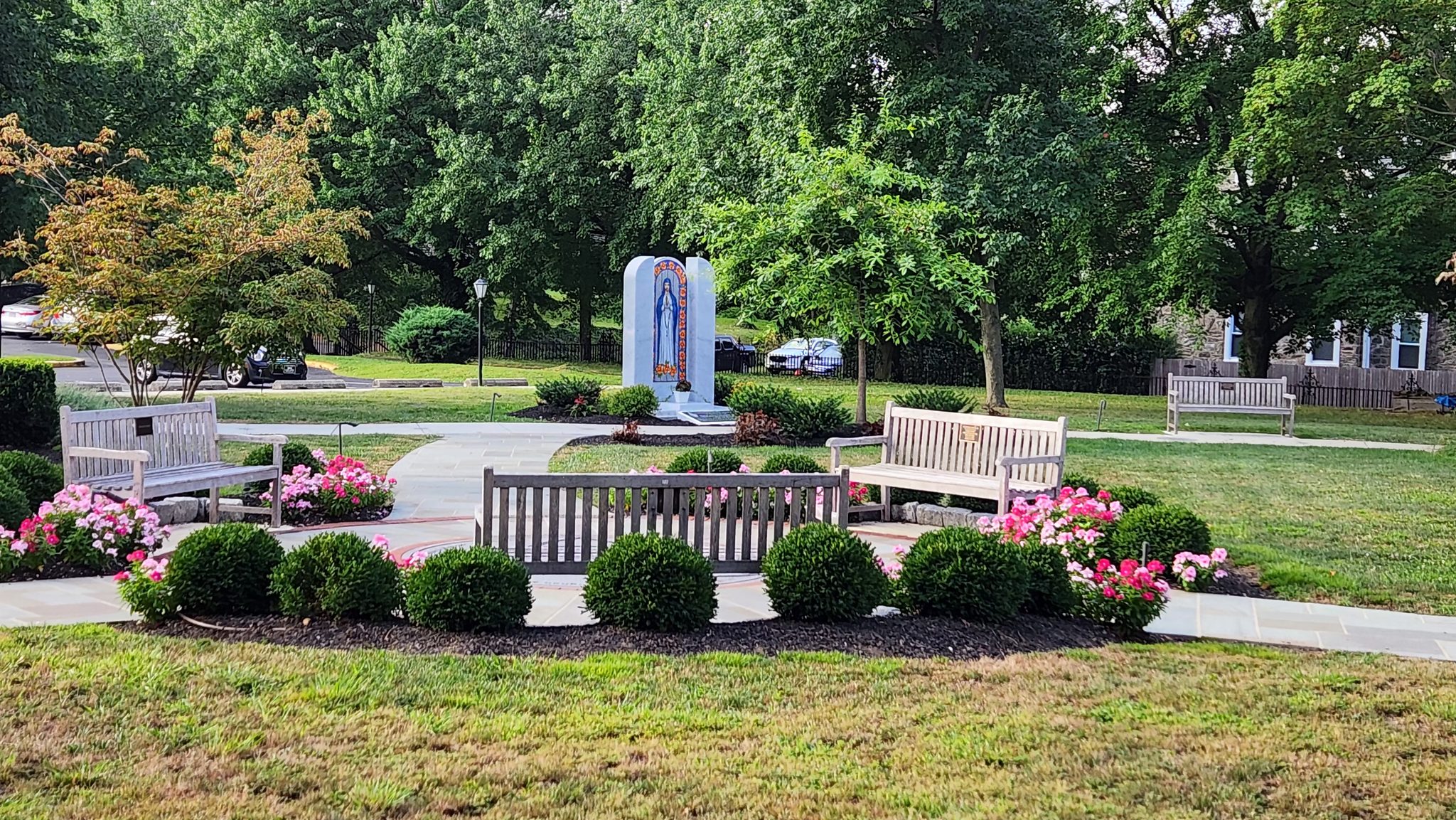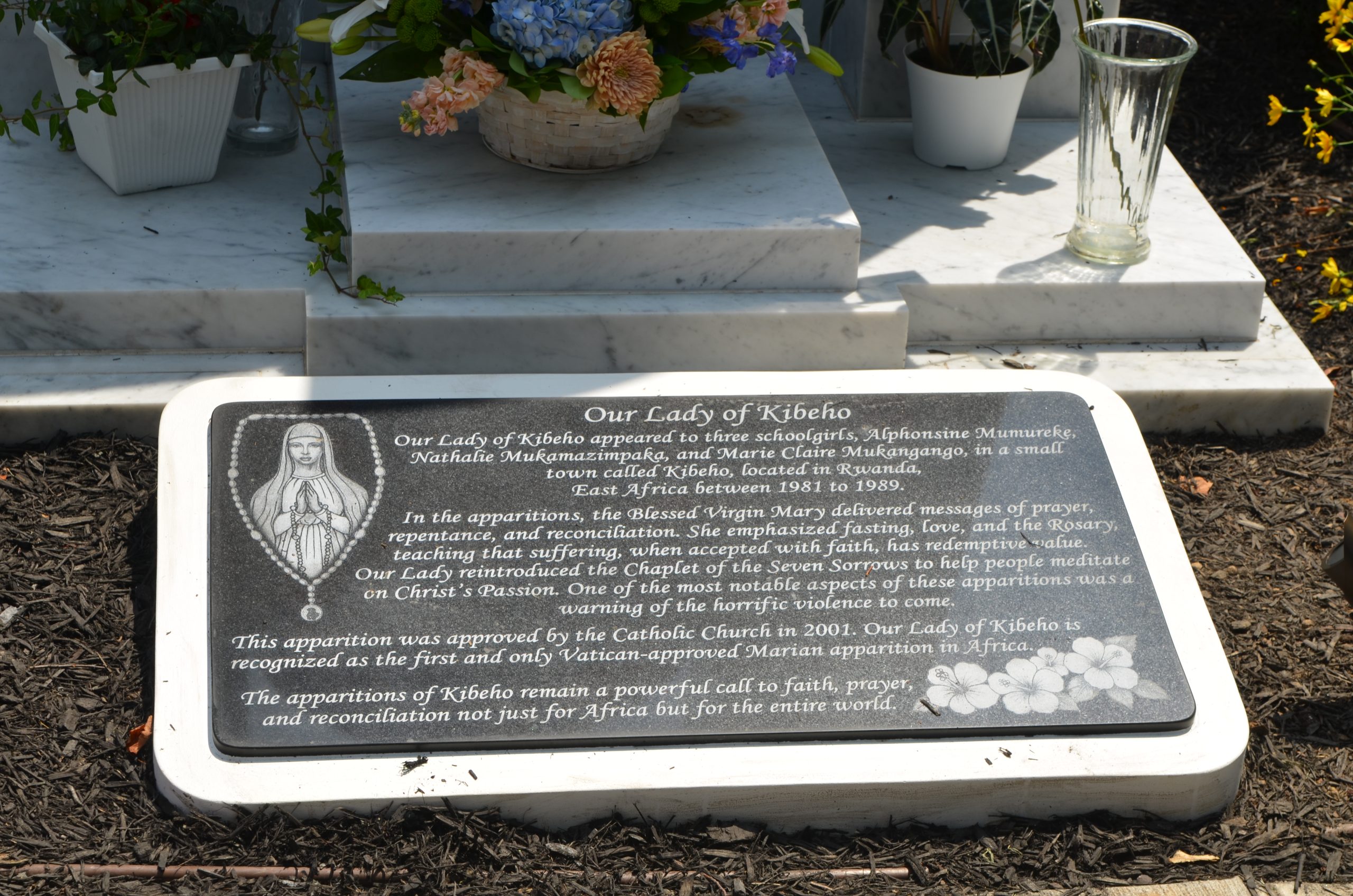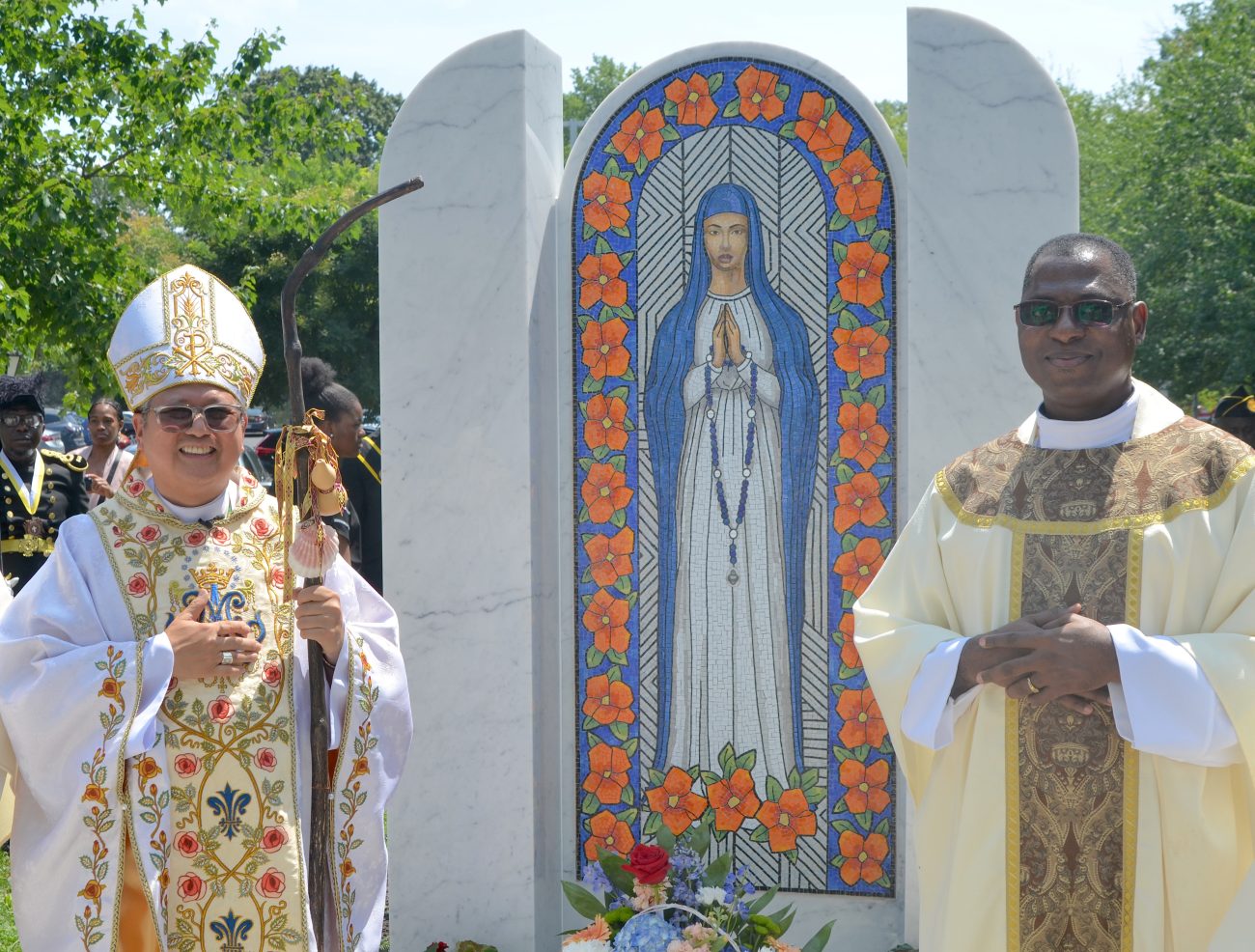“Can you feel the presence of our mother, Mary?” asked Vincentian Father Patrick Obot to a spirited audience that packed the Basilica Shrine of Our Lady of the Miraculous Medal in Philadelphia’s East Germantown neighborhood Sunday, Aug. 17.
The Nigerian priest gave a passion-filled homily for the Mass of Blessing and Dedication of the Our Lady of Kibeho Shrine, now permanently set within a rosary walk in the courtyard outside the Basilica Shrine.
“The heart of a good mother is always with their children,” Father Obot said during the Mass, which was led by Auxiliary Bishop Efren V. Esmilla with numerous concelebrating priests and music joyously offered in numerous languages by Philadelphia’s African Catholic Choir.
“If our earthly mother can be so kind, generous, and so loving, what do you think about the mother of Jesus? The appearance of Our Lady is a reminder of Mary’s maternal care and intercession.”
The new shrine commemorates the first apparition of the Blessed Mother in Africa approved by the Vatican. It happened on Nov. 28, 1981 in Kibeho, Rwanda, where Mary appeared to Alphonsine Mumureke as the “Mother of the Word.”
Our Lady of Kibeho would speak to Mumureke and two of her high school classmates in a series of apparitions over two years where she shared the Rosary of the Seven Sorrows and foretold a coming catastrophe.
Thirteen years later, a wave of genocidal killings in Rwanda resulted in nearly 1 million people dead.
“They were not the goody-goody types. They were average, everyday girls, and the fact that Mary chose them is pretty much in line with some of the other apparitions,” said Father Obot.
“She doesn’t choose the ones you would naturally expect, but through them she wanted to give a message that really speaks about brotherhood, seeing each other as brothers and sisters, and especially in light of what was coming, the genocide that broke out in Rwanda.”
The Holy See and local bishops conducted a thorough investigation of the apparitions and approved them in 2001.
“The message of Our Lady was an urgent appeal for repentance and conversion of heart. Then Our Lady said, repent, repent, repent, convert, while there is still time,” said Father Obot.
The new shrine, located southwest of the main entrance to the Basilica on Chelten Avenue, was a four-year project of faith and passion for Deacon James Mahoney, the shrine’s associate rector. It is a collaboration between the Central Association of the Miraculous Medal (CAMM) and the Martin de Porres Foundation, funded by a grant from donor Willa Stokes, a Black Catholic who lived close to the Basilica Shrine.

(Photo: The Basilica Shrine of Our Lady of the Miraculous Medal)
“Mary Jo (Timlin-Hoag, CEO of the Central Association of the Miraculous Medal) said it would be nice if we had an African-American image of Our Lady on the rosary walk. I prayed for about a year and a half. I said, ‘God, really, do you really want me to do this?’” Deacon Mahoney said through tears.
“I talked to the Martin de Porres Foundation (in Wayne), who responded, ‘We have a pot of money we can use for that.’ I put them together with Mary Jo.”
The foundation focuses on supporting Black Catholics in the Archdiocese of Philadelphia through leadership and evangelization projects, said Cathy Hamilton, the organization’s president.
“We decided to do something permanent and lasting that would (show) Mary is the mother of the whole Church, and she’s the mother of the world,” said Hamilton. “She said, you’re all my children. And that’s how she feels about us.”
Deacon Mahoney said he has had moments of powerful insight standing before the shrine since it was constructed.
“When the image was first put there, I stood in front of it. I said, ‘Thank you. Thank you for letting me work in your house,’” he said.
“I stood right in front of her and said, ‘Thank you,’ and just started looking towards the day when we have this celebration.”
Sunday’s celebration honored a shrine that presents the Catholic faith in a way that will mean more to the residents of the East Germantown neighborhood and vicinity.
“Our neighborhood is probably 75 percent African American, yet most of our statues are pretty European-looking,” said Vincentian Father John Kettleberger, rector of the Basilica Shrine.
“To have a statue of Our Lady with color speaks to the neighborhood. That Mary is one of us, all of us; and different cultures, different backgrounds.”
“Everywhere she went, she dressed to look like the people she was going to appear to because she wanted them comfortable when she spoke with them,” said JoAnn Savoy, who has dedicated herself to Our Lady of Kibeho.
“Very often, African American stories aren’t told. Like Jesus says, it has to be up to us to share the Gospel, and that is part of the Gospel.”
“I feel like this opens the door literally within the neighborhood for people to recognize a part of themselves within the Blessed Mother,” said Hamilton. “They can recognize the Blessed Mother and the Lord within themselves in that kind of an encounter that perhaps they didn’t perceive they could have before.”
“We bring all these different African communities together,” said Deacon Mahoney.
“All the people, all of her children there are thanking our Blessed Mother for being so good to us, for leading us to her son Jesus, for never forsaking us, always holding us.”

A plaque beneath the statue of Our Lady of Kibeho at the Basilica Shrine of Our Lady of the Miraculous Medal. (Photo by Joseph Marchetti)
PREVIOUS: Changed Canonization Plans Bring New Spiritual Opportunities for Pilgrims
NEXT: New Website, Platforms, Bring Radio Ministry to New Listeners




Share this story